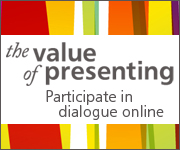Have you ever heard someone ask: “How can I sell tickets using Twitter?” or “I have a lot of Facebook fans but very few seem to buy tickets to my events. I don’t think Facebook works for me.”
I have puzzled over such statements; I couldn’t understand why anyone would measure these social media platforms by their capacity to achieve direct sales — whether of tickets or widgets or gadgets.
In my mind, social media were, well, social.
Social means relationships. Social means conversation – mostly consumer to consumer, but also consumer to brand. Social means mutual respect. Social might mean recommendation. Social can mean someone buys something based – at least in part – on a social network interaction. But it all starts with authentic relationships, it’s like being friends in the so-called real world.
Off I went looking for organizations using social media in exemplary ways, especially in the performing arts presenting field. This experiment is part of the Value of Presenting Study we have been working on.
The experiment: Interview by Twitter
The topic: The use of social media and online technology in your performing arts organization.
The interviewees: Two arts presenters (read the transcripts here: Shell Theatre and the National Arts Centre) who use social media in exemplary ways and an agent who does, too.
Key findings:
- Social media are about building relationships
- There are other ways to sell tickets
- Audiences engaged: mostly the 30 to 55 year-old crowd rather than “young people”, even though one interviewees said they find Facebook and txt works with a Students Rush tickets program;
- Hone your authentic voice
- Experiment to see what works for your organization
It’s fun to experiment with trying to help more people see what the strategic potential of social media in the performing arts presenting sector could be, by doing. In this case, it’s not in direct sales measured by revenue, but in building relationships measured by quality of relationships, engagement and championship of the brand. It is not an old-style transactional relationship, but one that is mutually enriching, extends beyond attendance, and requires new, timely interactions. And they are a lot more public.
The importance of voice is a fascinating topic in the concise world of social networks. (As these interviews show, short texts can be extremely good at making clear points and sharing salient information.) Voice is a key brand attribute that requires honing and calibration.
I think the adoption of social media shifts an organization’s brand into a new realm. As such, an evaluation of what an organization stands for and how it is and behaves in its world (in short an evaluation of market relevance), may well be an essential step toward embracing such contemporary marketing methods.


